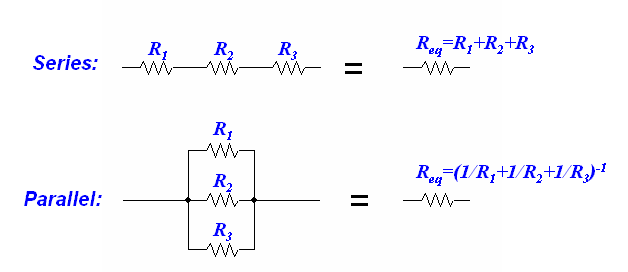Resistors in Series and Parallel
Key Questions
-
Answer:
#1/R_t = 1/R_1 + 1/R_2 + 1/R_3 + ... # .Explanation:
They add as inverse sums, unlike in a series circuit where they are directly additive..
https://www.swtc.edu/Ag_Power/electrical/lecture/parallel_circuits.htmSee also:
https://www.allaboutcircuits.com/textbook/direct-current/chpt-1/resistance/ -
When resistors are connected in series, they are laid out one after the other on the same path. This means that electrical current runs through them one at a time. All the current flows through each resistor (
#I_T = I_1 = I_2 = ...# ).Each resistor slows the flow of current, meaning that the total resistance is the sum of all the resistors together.
This is different from when resistors are connected in parallel, where current runs through them at the same time, and rather than each resistor having the same current, they each span the same voltage drop.
